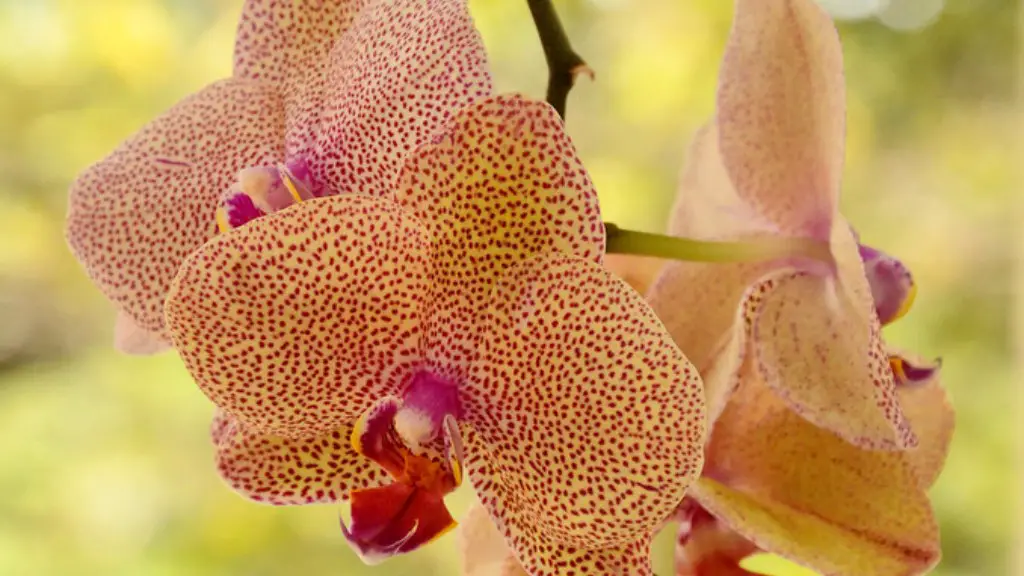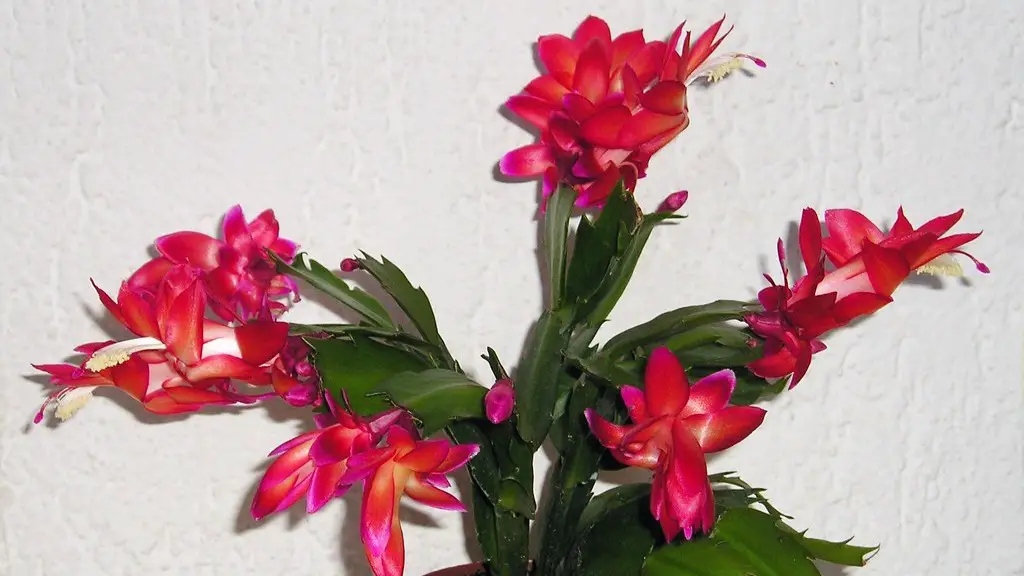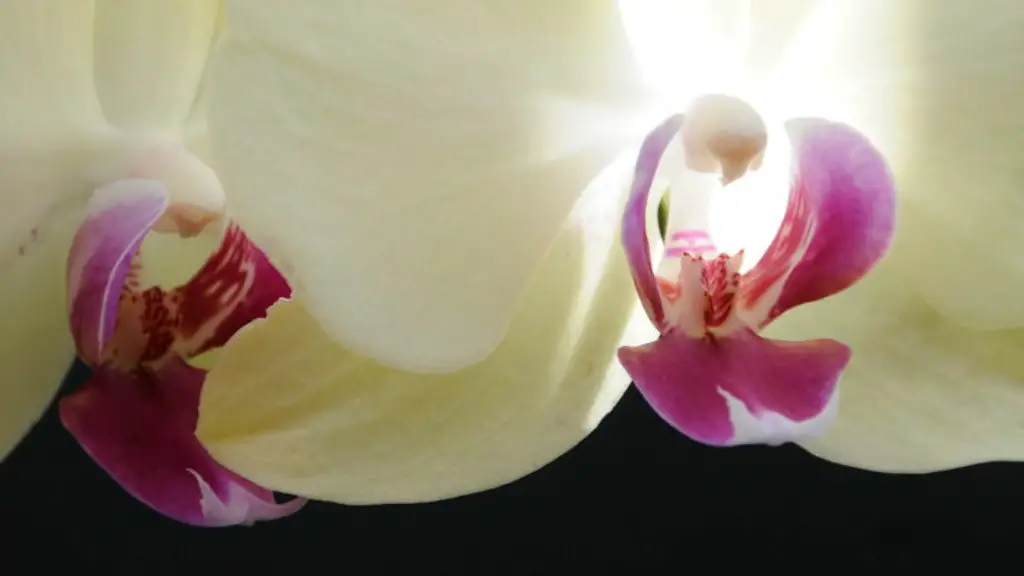If you’re looking to add a touch of elegance to your home, the phalaenopsis orchid is the perfect plant. Also known as the moth orchid, this long-lasting bloomer is relatively easy to care for, making it a great choice for beginner gardeners. With just a little bit of effort, you can keep your orchid looking gorgeous all year long.
To care for your Phalaenopsis orchid, you will need to water it regularly, but allow the soil to dry out between waterings. You should also fertilize your plant every two weeks with a half-strength fertilizer. In addition, you will need to provide your plant with bright, indirect light. If you follow these care instructions, your Phalaenopsis orchid will thrive.
How do I get my Phalaenopsis orchid to rebloom?
In order to encourage your orchid to rebloom, it is important to provide it with plenty of bright, indirect sunlight. The more light your orchid receives, the longer its blooms will last and the greater its chances of reblooming. So, be sure to place your orchid in an area where it will receive plenty of light.
Orchids are beautiful flowers that come in many colors, shapes, and sizes. After the flowers drop from the orchid, you have three choices: leave the flower spike (or stem) intact, cut it back to a node, or remove it entirely. Removing the flower spike entirely is the best choice if the existing stem starts to turn brown or yellow. This will prevent the spread of any disease and keep your orchid looking its best.
How often should I water my Phalaenopsis orchid
If your orchid is potted in bark, watering once a week is generally sufficient. If your orchid is potted in moss, water when the top feels dry. The amount of light and heat your orchid receives will also affect how soon your orchid needs watering. Summer months will need more frequent watering, winter will need less.
Phalaenopsis orchids are popular for their long-lasting flowers. They can bloom 2-3 times a year and the flowers last for 2-6 months. Phalaenopsis are also known as the “moth orchid” because of their moth-like appearance.
What triggers flowering in Phalaenopsis?
Most phalaenopsis species are native to areas close to the Equator and do not need a specific photoperiod to induce flowering Instead, it is the low temperature that triggers phalaenopsis to start the flowering process.
Orchids are a notoriously finicky plant, and one of the main reasons for this is their preference for a small pot. As they grow, their roots weave through the compost, and eventually they run out of room. This is when their roots push the plant up above the rim of the pot or reach out into the air, looking for breathing space. Re-potting is the best way to give your orchid the room it needs to continue growing healthy and strong.
What month do orchids lose their flowers?
Orchids are one of the most beautiful and delicate flowers in the world. They are also one of the most popular houseplants. Phalaenopsis orchids are natives of Southeast Asia and are often called moth orchids because their flowers resemble moths. These orchids bloom in the late winter through the spring. In late June and July, the Phalaenopsis orchids in our collection finally lose their blooms. Some will remain in bloom for awhile longer. The ideal time to repot orchids is when they go out of bloom and Phalaenopsis is no exception.
If you want to get a new orchid flower spike, you should place the plant in an area with a lower room temp. The ideal temp would be about 55-65°F at night. You could also try placing your orchid in a window away from the heater. The best time to try this is in winter when homes and their windows aren’t as warm.
How do I get my orchid to grow a new stem
To ensure that your orchid will grow a new stem, water it regularly but allow it to dry out completely before each new watering. Make sure that it is in a room with around 50 to 70% humidity and fertilize it weekly if there are new growths. Once the plant matures, taper off the fertilization.
Make sure to put your orchids on top of the pebbles and fill the tray with water. Make sure the water doesn’t touch the bottom of the pots, as this will cause the orchids to rot. The water will evaporate and humidify the air around the plant.
Should I mist my Phalaenopsis orchid?
From my personal experience, I have found that orchids love humid conditions and they are very easy to take care of. I would suggest misting them with a spray bottle and giving them a little extra humidity if possible.
It is important to use distilled or rain water when watering orchids as softened water can damage the plant. Most chlorinated tap water is fine to use, as long as the chlorine levels aren’t too high.
How many times a year do Phalaenopsis bloom
Orchids are beautiful flowers that can bloom for several months at a time. They can be pollinated multiple times during this period and will typically complete a life cycle within 9 to 14 months. If the plant does not die, it can typically re-bloom once every 8 to 12 months. This makes them a great choice for those who want to enjoy their beauty for an extended period of time.
Orchids need a good soak, but don’t tolerate sitting in water. Allow the water to drain out completely. Uneven watering will result in shallow or uneven root growth. After you have watered your orchid, feel the weight of the container; it will be heavy.
Do Phalaenopsis orchids Rebloom on the same stem?
The best way to encourage your Phalaenopsis orchid to re-bloom is by giving it extra care. This includes providing the plant with bright, indirect sunlight and keeping the temperatures between 65-80 degrees Fahrenheit. Additionally, make sure to water the orchid regularly and fertilize it every two weeks. With a little extra care, your Phalaenopsis orchid will re-bloom in no time!
Coffee grounds are an excellent fertilizer, especially for orchids and African violets.Be sure to dampen the potting mix before fertilizing, as dry roots can be burned by the fertilizer.
How do I encourage my orchid to flower
If you want your orchid to bloom again, follow these simple steps:
Continue to water your orchid with 3 ice cubes once a week.
Fertilize your orchid once or twice a month using a balanced houseplant fertilizer at half strength.
Help your orchids grow by providing plenty of indirect sunlight.
Put your orchid in a cooler spot at night.
The microclimate of higher humidity helps prevent heat stress and aids stressed plants in recovering. This is because the higher humidity helps to keep the plants cooler, and also helps to prevent the evaporation of water from the leaves and flowers. Heat stress can cause a variety of symptoms in plants, including yellowing of leaves and flowers, withered leaves, sunburn, and shrivelled pseudobulbs. By creating a more humid environment, you can help to prevent these symptoms from occurring, and also help any plants that are already experiencing heat stress to recover more quickly.
Final Words
How to care for a Phalaenopsis Orchid:
Light: Bright, indirect light
Water: Keep the potting mix moist, but not soggy. Allow the mix to dry out slightly between waterings.
Fertilizer: Feed monthly with a balanced fertilizer diluted by half.
Humidity: Orchids prefer high humidity, so mist the plant regularly or set the pot on a tray of pebbles and water.
Temperature: Orchids prefer night temperatures of 60-65°F and daytime temperatures of 75-85°F.
Repotting: Repot every 12 to 18 months as needed.
To care for a phalaenopsis orchid, water it once a week and fertilize it monthly. Allow the potting mix to dry out between watering, and give the plant bright indirect light.





